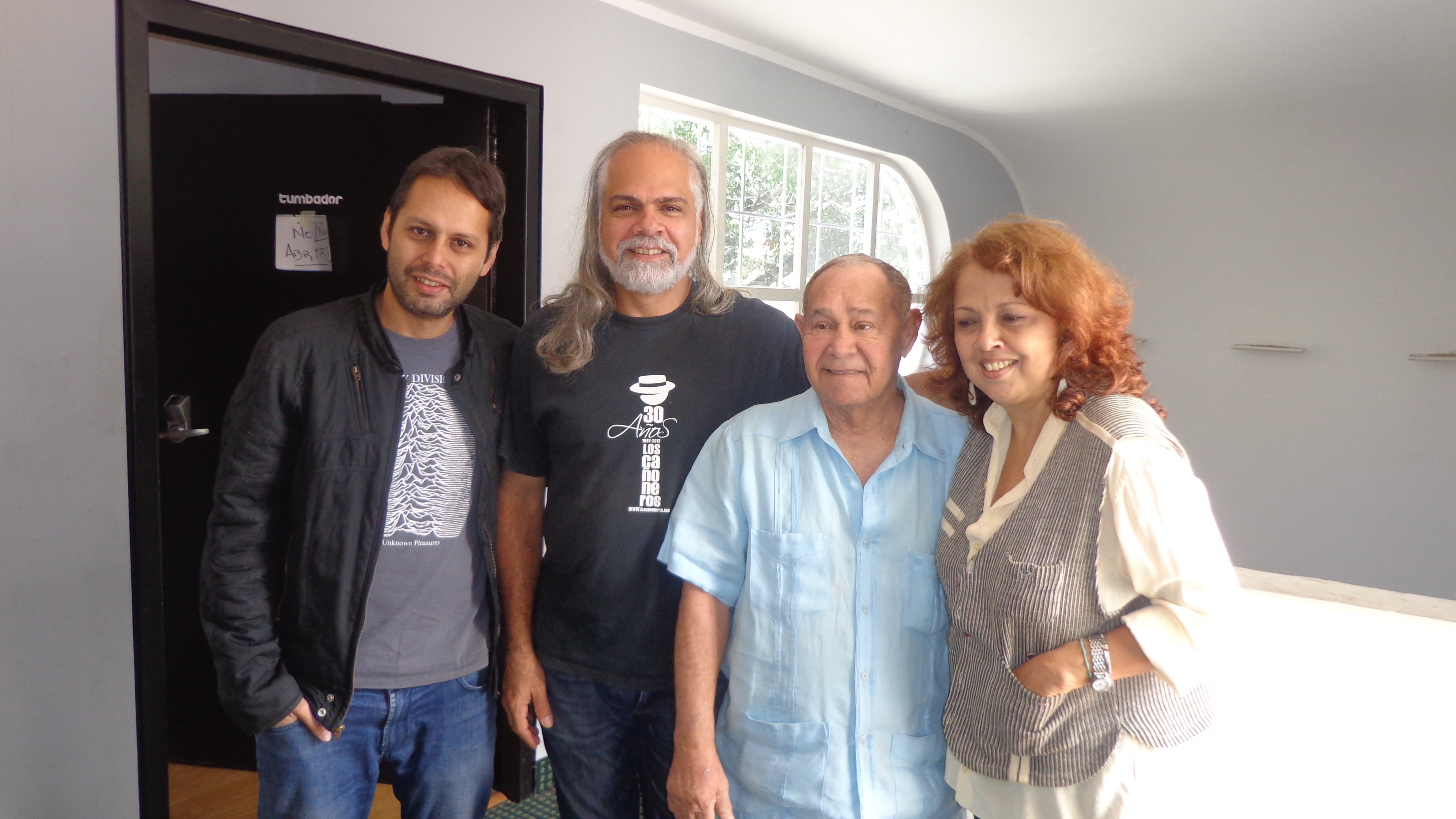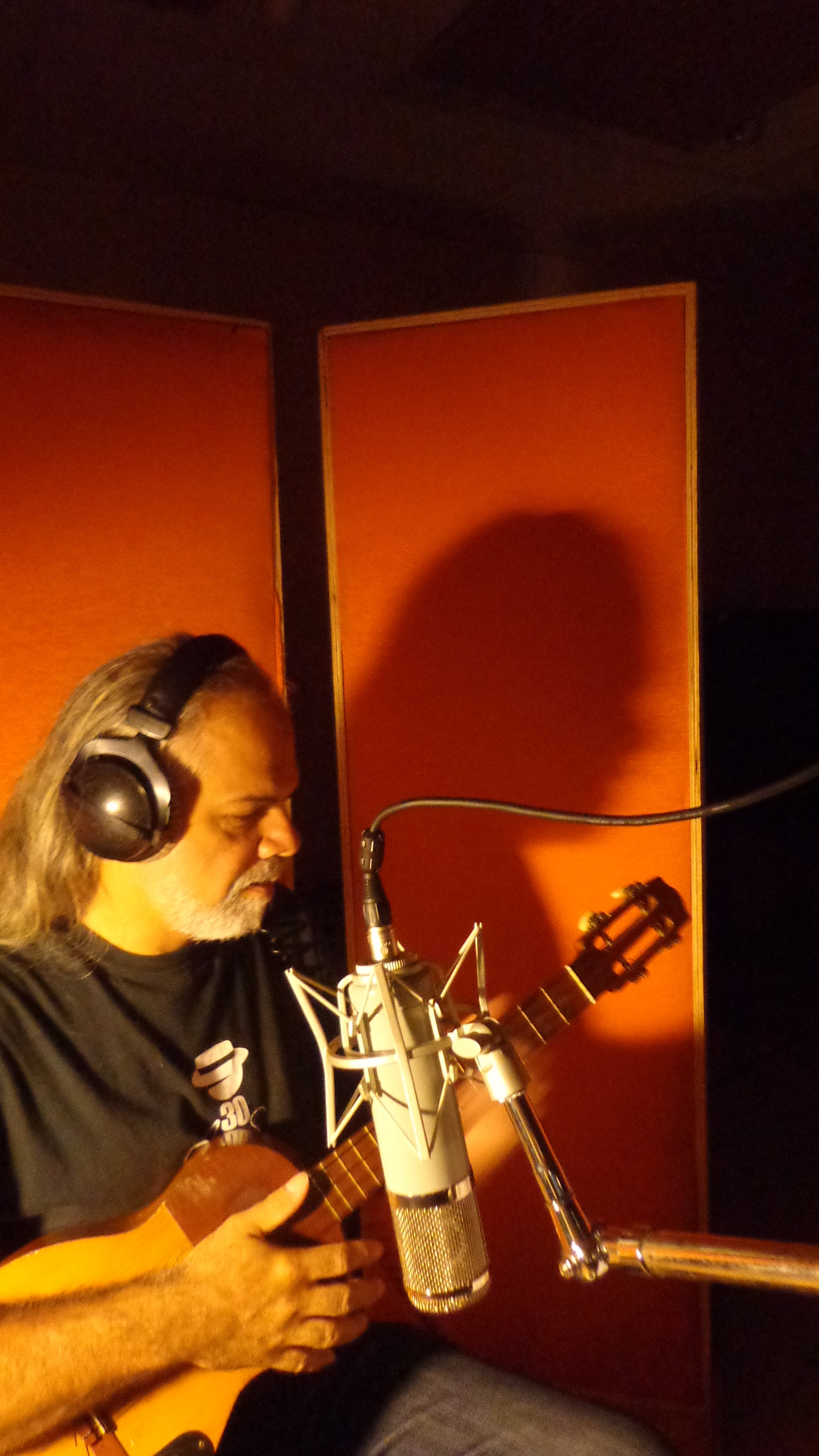When I was born, Memo Morales already had a long career as a singer. And when I started to become aware of the music I was listening to, his voice was part of most hits played on the radio.

Deutsch Version zur verfügung hier!
¡Versión en español disponible aquí!
Memo also in the subconscious
Guillermo Morales, better known as Memo Morales, was born on April 6, 1937, in Maracaibo and arrived at Caracas at the age of eight, already having an important path as a "prodigy child". At 16, he began his professional career as a singer and was the voice of the most important orchestras of his time. In 1964 he joined the orchestra Billos Caracas Boys beside Cheo García for the most glorious era of this orchestra.
Memo's voice became part of our historical memory. In addition, he had a so very special voice and a unique style that was recorded in the deepest subconscious for all of us who lived that time.
His extraordinary interpretation of Spanish rhythms, especially Flamenco Rumba and Pasodoble, earned him the title of "El Gitano Maracucho" (The Gypsy from Maracaibo).
Song like "Ni se compra ni se vende", "Viva España", "Si vas a Calatayud", "La Canción de Caracas", "Se Necesitan Dos", "Amarillo Limón", "Rumores", "Parece mentira", "Qué Tontería", "El Tunante", "Dámele Betún", "Juanita Bonita", "Qué Tienes Tú", "Eva", "La Rubia y la Trigueña", "Le Lo Lay", "Fantasia Moruna", "Yo soy el Punto Cubano", among others were hits that were heard even in the most remote villages of our country and other countries and other continents.
I have to add that for 7 years living with my family in Europe, the records of Billos were a way to stay in touch with our country and of course there was also the voice of Memo Morales.

Our meeting
Thanks to the success of the music group that I leaded (even actually I do) in the 80's, "Los Cañoneros", we had the opportunity to interact with the most outstanding artists in the country and of course Memo was not the exception. There were many performances we had the opportunity to talk with him behind the scenes and hear him singing live.
However, our group had never considered recording or performing with guest artists. That was not in our habits. And the only time someone came up with this idea, it became a not very positive experience.
For that reason, our relationship with other artists was very friendly, but without considering collaborations.

Change of plans
After a deep transformation that I made in Los Cañoneros, where we expanded the orchestration to nine musicians and we proposed a new sound, it was also the idea to perform tracks with some featured guests.
In 2012, the year in which Caracas became 445 years old, and our Group 30, I decided to make an album that was a complete homage to our capital. Surged the idea of the album "Esta es Caracas" (This is Caracas) and in the same year I made the selection of the preliminary repertoire, emblematic songs dedicated to the city, and an original song specially written for this project, the one that gave the Album its title.
At that time, the idea was to invite Memo Morales to sing a Pasodoble by Billo Frómeta, which the orchestra of the Dominican had made popular, in the voice of Memo: "La canción de Caracas "(The Song of Caracas). At that time, I suggested it to him and he told me that it's okay, I should just let him know. But the project did not materialize and time passed.
Three years later I get the support of a state institution and they decide to finance the album. The arrangements that were not already written had to be completed so quickly. One of them was the Paso doble of Billo, whose arrangement was to be written by Benjamin Brea, who was our saxophonist for nearly 20 years, but life played a trick on us and he left us before we could do the record. So I took care of the arrangement of this tune and a few other tracks that were not ready yet.

The time has come
Finally, we enter the recording studio, in a project with a very elaborate production and with the best tools, including the best technical equipment, the best crew, the best studio, etc.
Everything was pretty quick and intense because we wanted to make a first-class album. And with the desire to have some special guests, we had to work wonders to coordinate the recording plans with them. So complex was it that a few months ago I wrote a post where I told the story about the process just for one of the tracks Record a song featuring guest stars.

And memo arrived
At the moment Memo came to record into the studio, we had already finished the base, although some details were missing. I was very excited about his arrival but I had to keep the concentration because I had to explain to him the outline of the song, discuss everything with him and continue with the recording. And so we did it. I went into the recording room, we listened and he started make his takes. Or rather "the take" because he once performed it so perfectly that the only reason to repeat it was that the music producer Chapis Lasca normally mades two takes of all the material...
He repeated, he made the second record the same as the first one, then we went into the control room, we listened to the track and given that we were all happy, he and his wife Alicia, who was also his manager, Assistant and everything else, said goodbye and left.

Epilogue
Finishing this we were only one step ahead, so we decided to go on with the recording. Considering that the session of "La Canción de Caracas" was set up, the producer suggested that I should record the cuatro at once, a task that was still pending. I got the instrument, we placed the microphone, did the equalization and started recording.
But the energetic load left by Memo did not allow people in the booth to concentrate and while they were commenting on the experience, they looped me the playback so I could check what I should play.
It is at this moment that I am able to hear the track with the base and the harmony, the sound of the cuatro I played, and above all the voice of Memo, the same that I had heard so many times before and all those childhood memories came to me, my whole life went into sensations and I found out that I was accompanying that voice that was part of my genetic code. The emotion was so great that I began to cry with emotion without being able to control myself.
For my tranquility and "ego", those in the control room were so excited about what we had just experienced that they could not stop commenting and they did not notice my tears and that saved me being exposed in my weakness in front of the deepest emotions by a human being. It also showed me how deep the tracks are left by an artist who expresses the most genuine emotions in his art and manages to win the love of a whole people.

The good bye
Together we planned a performance where we could play this and other songs with Los Cañoneros. But on January 1, 2017, during the New Year's performance, her voice was silenced forever and so many new projects were left untimed with one of the most popular and popular singers of all time, Memo Morales.

La canción de Caracas - Los Cañoneros feat. Memo Morales

Los Cañoneros - Esta es Caracas
- http://www.loscanoneros.net
- https://store.cdbaby.com/cd/loscanoneros2
- http://www.facebook.com/loscanoneros
- https://itunes.apple.com/ve/album/esta-es-caracas/992331298
- Spotify
The photos in this post are my property.

Follow - Upvote - Resteem
Recent posts / Artículos recientes
- Komanda - Videoclip - Thanks (en-es-de-ru)
- Celia Cruz vs. Gloria Gaynor (English - Español - Deutsch)
- Joropo, todo un país bailando
- Joropo, a whole nation dancing
- Un Canto para Caracas (Audio)
- Los Melódicos - Ritmo en Venezuela (English - Español - Deutsch)



